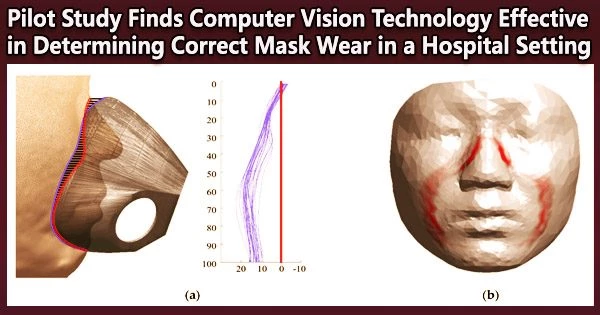Universal mask use was a key tactic for stopping the spread of COVID-19 in early 2020, before COVID-19 vaccinations and efficient treatments were widely accessible. Hospitals and other places with mask requirements, however, had a problem.
Manually reminding patients, guests, and employees to wear masks was necessary, which required a lot of time and labor. Researchers from Brigham and Women’s Hospital (BWH), a founding member of the Mass General Brigham health care system, and Massachusetts Institute of Technology (MIT) set out to test a tool to automate monitoring and reminders about mask adherence using a computer vision algorithm.
The researchers completed a pilot study with willing hospital staff members and discovered that the technology worked well and that most users had a favorable experience engaging with the system at a hospital entrance. The study’s findings are reported in BMJ Open.
“To change a behavior, like mask-wearing, takes a lot of effort, even among healthcare professionals,” said lead author Peter Chai, MD, MMS, of the Department of Emergency Medicine. “Our study suggests that a computer visualization system like this could be helpful the next time there is a respiratory, viral pandemic for which masking is an essential strategy in a hospital setting for controlling the spread of infection.”
Our data suggest that individuals in a hospital setting are receptive to the use of computer visualization systems to help detect and offer reminders about effective mask-wearing, particularly at the height of a pandemic as a way to keep themselves safe while serving on the front lines of a healthcare emergency. Continued development of detection systems could give us a useful tool in the context of the COVID-19 pandemic or in preparation for preventing the spread of future airborne pathogens.
Peter Chai
“We recognize the challenges in ensuring appropriate mask usage and potential barriers associated with personnel-based notification of mask misuse by colleagues and here we describe a computer vision-based alternative and our colleagues’ assessment of initial acceptability of the platform,” said senior author C. Giovanni Traverso, MB, BChir, Ph.D., of the Department of Medicine at BWH and in the Department of Mechanical Engineering at MIT.
In order to detect mask used for the study, the scientists used computer vision software that was created using lower resolution closed circuit television still frames.
Between April 26, 2020, and April 30, 2020, researchers invited employees who were entering one of the main hospital entrances to participate in an observational study that tested the computer vision model. The team enrolled 111 participants who interacted with the system and were surveyed about their experience.
100% of the time, the computer visualization system correctly identified the presence of mask adherence. The majority of participants (87%) said they had a good experience using the hospital’s system.
The pilot was only open to staff at one hospital, therefore it might not be transferable to other contexts. Additionally, throughout the epidemic, views and actions concerning masking have evolved and may differ across the United States.
Future research is required to determine what obstacles exist in healthcare settings compared to other public institutions for the implementation of computer visualization systems.
“Our data suggest that individuals in a hospital setting are receptive to the use of computer visualization systems to help detect and offer reminders about effective mask-wearing, particularly at the height of a pandemic as a way to keep themselves safe while serving on the front lines of a healthcare emergency,” said Chai. “Continued development of detection systems could give us a useful tool in the context of the COVID-19 pandemic or in preparation for preventing the spread of future airborne pathogens.”





